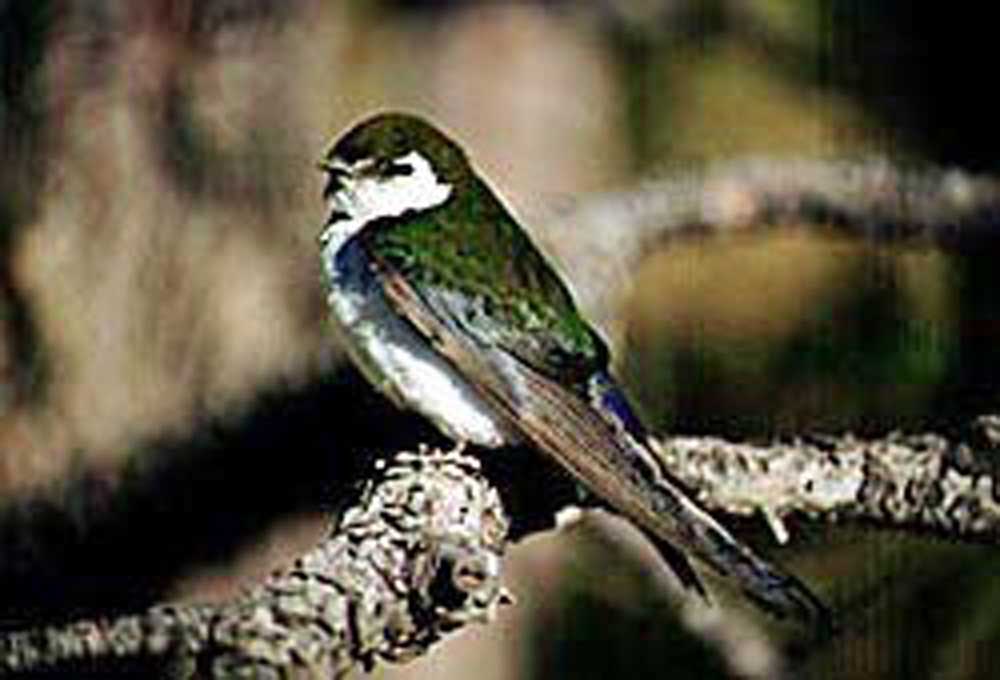Violet-Green Swallow
Published 12:00 am Wednesday, April 9, 2014

- Courtesy National Park ServiceThe violet-green swallow has a green back, a white underside and purplish wings.
Violet-green swallow
Scientific name: Tachycineta thalassina
Characteristics: A small swallow, about 5 inches long, with an iridescent green back, purplish wings and white undersides; the white extends to form two white patches on the uppersides of the rump. The white in the face extends to above the eye. The short tail is somewhat forked. Females are more brown-bronzed in color than the males.
Breeding: Nests in tree cavities, cliff crevices, abandoned woodpecker holes or sometimes in nest boxes. Builds a cup-shaped nest of grass, pine needles and plant fibers, and may include feathers. Lays four to seven white eggs, which the female incubates for about two weeks. The young leave the nest around 23-24 days old.
Range: Breeds from Mexico to Alaska and throughout the American West. Winters from Mexico through Central America.
Habitat: Nests in open areas with nearby standing live or dead trees from low to mid-elevations. May occur in a variety of habitat types.
Food: An aerial feeder, violet-green swallows catch insects such as flies, ants, wasps, bees, moths and others in flight. The birds skim over water sources and drink on the wing.
Comments: When the light strikes the glossy back and wings, this bird’s common name is easy to understand. These swallows often forage higher than other swallows but will hunt low over the ground or water during bad weather. The genus name means “swift-moving” in reference to its flight and the species name means “sea green” for the coloration of the back and wings. These birds may forage in mixed flocks with other swallows and swifts.
Current viewing: Hatfield Lakes, Deschutes River, Sawyer Park, neighborhoods and other areas.
— Damian Fagan is an East Cascades Audubon Society volunteer and COCC Community Learning instructor. He can be reached at damian.fagan@hotmail.com.
Sources: Oregon Department of Wildlife Resources and The Audubon Society Encyclopedia of North American Birds by John Terres






